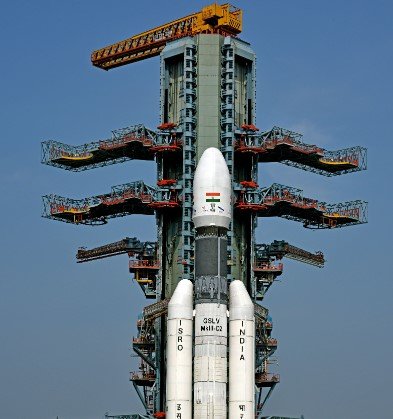India’s space agency, the Indian Space Research Organisation (ISRO), is set to celebrate a major milestone early next year. The country’s 100th space launch will take place from Sriharikota, marking a momentous achievement for the nation’s ambitious space program. The mission, which will utilize the Geosynchronous Satellite Launch Vehicle (GSLV), is slated to occur in January 2025, according to ISRO Chairman S. Somanath. This launch will officially be the 100th mission to lift off from the Satish Dhawan Space Centre, the primary spaceport located in Andhra Pradesh.
A Milestone for India’s Space Program
Sriharikota has become the launch hub for India’s space endeavors, and this upcoming GSLV mission represents a significant achievement. Since its first launch in 2008, the spaceport has facilitated the successful deployment of numerous satellites, including both domestic and international payloads. The milestone of 100 launches is not just a number; it signifies years of progress, technological advancement, and India’s growing presence in the global space arena.

The mission will be a moment of celebration for ISRO, but it also highlights the nation’s increasing capabilities in space exploration. With multiple successful launches and the development of more advanced technologies, ISRO has cemented its position as a key player in the international space community.
The Importance of the PSLV-C60 Launch
Before the GSLV mission marks the historic 100th launch, ISRO recently completed its 99th launch—the PSLV-C60 mission. Launched on December 30, 2024, this mission successfully placed two spacecraft into orbit for conducting the Space Docking Experiment, or SpaDeX. This achievement in itself is a testament to the reliability and precision of ISRO’s Polar Satellite Launch Vehicle (PSLV), which has been the backbone of the Indian space program for years.
ISRO’s PSLV series has gained international acclaim for its versatility and cost-effectiveness, helping India launch satellites for various countries and contributing to numerous space missions around the world. The SpaDeX mission, which aims to test docking capabilities in space, is an important step towards more advanced space exploration missions, potentially paving the way for crewed missions in the future.
GSLV: A Step Towards Larger Missions
The upcoming GSLV mission is expected to be just as significant as the PSLV-C60 launch. Unlike the PSLV, which is primarily used for launching smaller payloads into polar orbits, the GSLV is designed to carry heavier satellites into geosynchronous orbits. This capability is crucial for launching communication satellites and other large payloads that serve both domestic and international needs.
The GSLV mission will demonstrate ISRO’s continued growth and innovation in the field of space technology. It will also serve as a reminder of the Indian space agency’s ability to accomplish highly complex missions, expanding the scope of what is possible for India in space.
A Look Back at Sriharikota’s Launch Legacy
Since its inception in 2008, Sriharikota has become synonymous with India’s space achievements. The Satish Dhawan Space Centre (SDSC) has hosted a wide range of successful launches, contributing to India’s growing reputation in space exploration. From launching remote sensing satellites to placing communication satellites into orbit, Sriharikota has been at the heart of India’s ambitious space plans.
In addition to commercial and scientific satellite launches, the spaceport has been used for missions like the Chandrayaan lunar exploration series, the Mars Orbiter Mission (Mangalyaan), and the Gaganyaan mission, which aims to send Indian astronauts into space. Each launch has marked a step forward in ISRO’s capability to execute increasingly complex and advanced missions.
The Road Ahead: What the 100th Launch Means for ISRO
The 100th launch from Sriharikota is more than just a statistical achievement for ISRO. It is a reflection of the agency’s relentless pursuit of excellence, technological innovation, and its ability to compete on the world stage. As the space agency sets its sights on the future, including ambitious missions to the Moon, Mars, and beyond, this milestone offers a moment to celebrate the past while looking forward to the future.
For ISRO, the GSLV mission in January is just one part of its broader vision. With plans for more sophisticated satellites, deep space exploration, and possibly even crewed missions, ISRO is positioning itself for an exciting next chapter in its space journey. And as India continues to make strides in space technology, the 100th launch will undoubtedly be a symbol of the nation’s commitment to advancing its space capabilities for decades to come.
